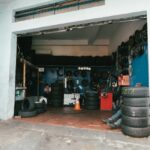Hydraulic hoses help machines and tools work safely and as they should. Machines like construction excavators or farm sprayers use hydraulic hoses to move high-pressure fluid. Using the wrong hydraulic hose can stop a machine from working, slow it down, or even make accidents happen. Equipment in Australia faces rough weather, so finding the correct hose matters a lot.
Understanding all the different points first is needed. There are pressure levels, hose sizes, fluid and fitting compatibility, and environment factors like hot sun, dust, and sharp rocks. Australia has many sellers for hydraulic hose supplies, but they will not work for every job. Picking the right hose takes a step-by-step process, not a random choice, to keep everything working for a long time and keep people safe.

Knowing Pressure Ratings and What Your System Needs
Checking the pressure your system uses must come first to pick the hydraulic hose. Each hose has a set top working pressure, and it should not be lower than what your system needs. Machines often run at changing pressures, so think about highest spikes, not just the normal number. Hose makers print pressure numbers on the hose, and using a hose that cannot take the pressure can break the hose or stop the machine. Hot weather and rough land in Australia change how a hose takes pressure, which can change how long it lasts. Getting advice from a hose expert or supplier who knows the local area will help you choose better. This way, the chosen hose stands up to working pressure and tough outside things that can make inside pressure worse.
Deciding on Best Hose Size
Picking the right size hose matters a lot. Hoses come in many widths and lengths, and a wrong-sized hose can block how fluids move or make the machine slow. If a hose is too small inside, the fluid speeds up, causing more heat and shaking, which breaks parts faster. Big hoses can be tricky to set up and cost more money without giving any better result. Australian farms and mines use machines where maintenance is not close by, so perfect hose size is key. Look at the inside width to manage how fluid flows—it is not enough to check the outside. The hose length needs thought as well; too short makes it pull too much, too long can twist it. Getting a pro to check your plans or equipment can help get the exact size needed.
Examining Fluid and Fitting Match
Checking if the hose and the fluid work together is very important. Not every hose material works with every fluid; the wrong one might swell, get hard, or even crack inside. In Australia, people use normal oil-based fluids and also greener or safer ones which need hoses like PTFE, thermoplastic, or synthetic rubber. Fittings must match the hose and the machine, too. Sizes and thread types that do not fit can make leaks and make things unsafe. Hose sellers in Australia mostly use fittings that match world standards, but you must double-check every part and seal. The manual for your equipment or a trained hose tech can help you get the right fittings, since mixing up parts is a top cause of problems.

Looking at Weather and Work Situation
Australia has hot deserts, cool areas, and wet places, so hydraulic hoses face different hard situations. Sunlight can wear out outside hose cover, especially for things left outside. If your hose works in dirt or with stone, scraping will happen, and moving machines need hoses that can bend a lot without getting hard. Weather changes how hoses act, too. Cold can stiffen and break hoses, while hot times weaken the hose, lowering the pressure it can handle. In areas with heat risk or fires, hoses that resist fires might be needed. It is best to choose an outside cover that matches the actual working place, for instance with oil blocking, fire fighting, or scrape proof.
Choosing hoses goes beyond just the machine and depends on where it works every day. If you are in a far part of Australia and a hose breaks, fixing it can be slow and not easy. Picking a hose with the right weather rating matters as much as matching system details.
















